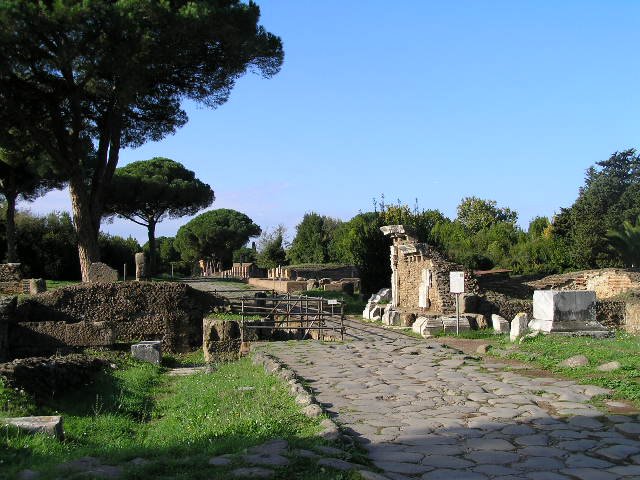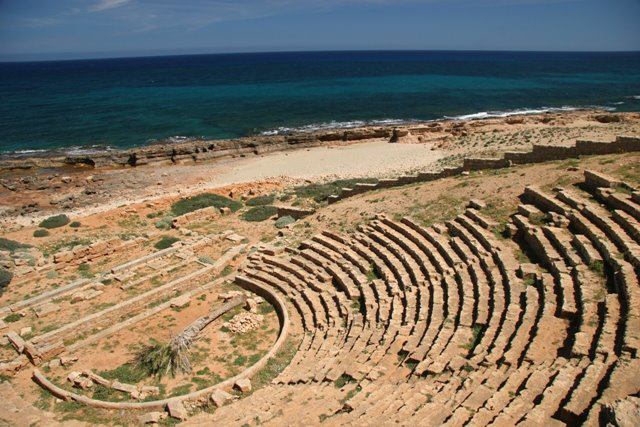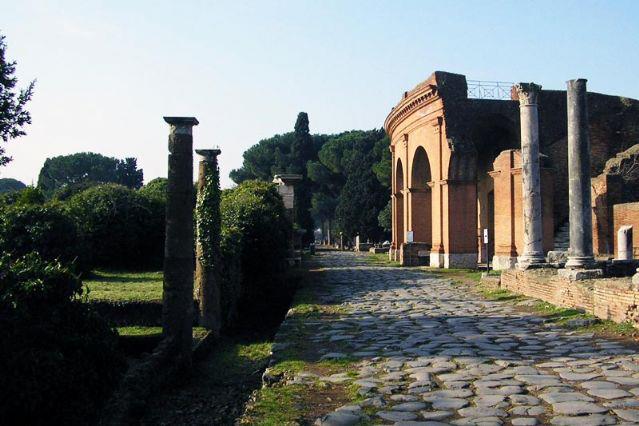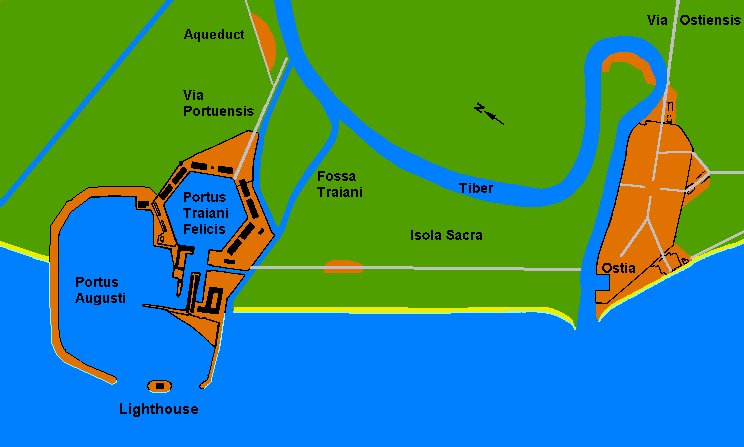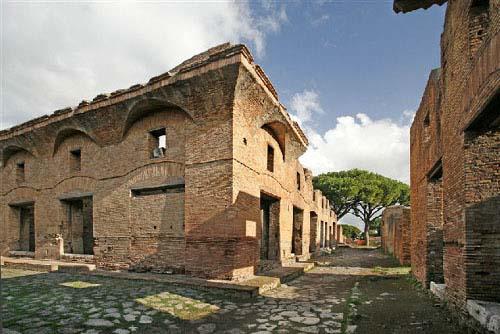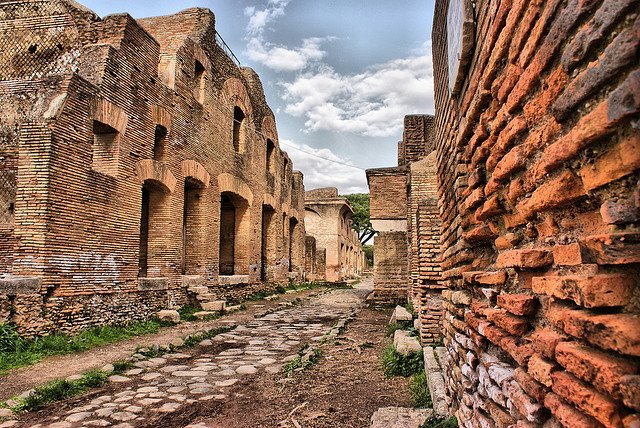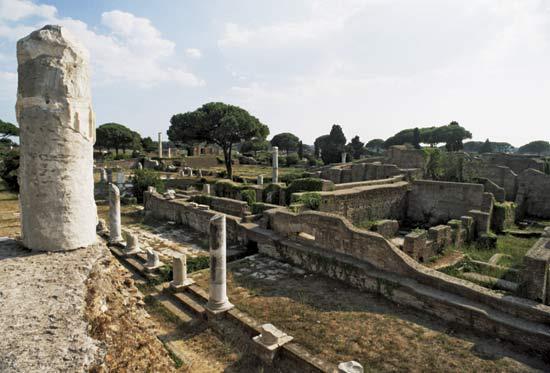Ostia
Ostia was founded, probably in the 4th century BC, as a military colony to guard the river mouth of Tiber against seaborne invasions ("Ostia" in Latin means "mouth"). Ancient tradition however (authors such as Ennius, Livius, Cicero and Dionysius of Halicarnassus) has it that Ostia was founded by the fourth king of Rome, Ancus Marcius, who was thought to have ruled in the late seventh century BC.
The oldest settlement that has been found is the so-called Castrum, a rectangular, military fortress. In the third century BC Ostia was primarily a naval base. In the second century BC it gradually evolved to a commercial harbour. Later, during the centuries when virtually all imports reached Rome via the Tiber, Ostia gained prominence as the domestic landing for cargo boats.
The town was further developed during the first century AD under the influence of Tiberius, who ordered the building of the town's first Forum. The town was also soon enriched by the construction of a new harbour on the northern mouths of the Tiber. The new harbour, not surprisingly called Portus from the Latin for "harbour," was excavated from the ground at the orders of the emperor Claudius.
By the 2nd century AD, Ostia had become a flourishing commercial center inhabited by 70,000 people, whose apartment buildings, taverns, and grocery shops are still intact. The Portus became silted up and needed to be supplemented later by a harbour built by Traian, finished in the year AD 113; it has a hexagonal form, in order to reduce the erosive forces of the waves. This took business away from Ostia itself (further down river) and began its commercial decline.
With the end of the Roman Empire, Ostia fell slowly into decay, and was finally abandoned in the 9th century due to the repeated invasions and sackings by Arab pirates.
The site of Ostia has been extensively excavated and restored. Among the impressive remains are the so-called medianum-apartments (the habitations of the commercial middle class), the Domi (the houses of the upper class), hotels, brothels, bars and hundreds of shops, baths and communal latrines, workshops, the Capitol (temple of Jupiter, Minerva and Juno), temples of Mithra (Mithraea) and a well restored theatre.
Read more: http://www.ostia-antica.org/
http://www.initaly.com/regions/latium/ostia.htm
http://www.italyguides.it/us/roma/ancient_ostia/ancient_ostia.htm
